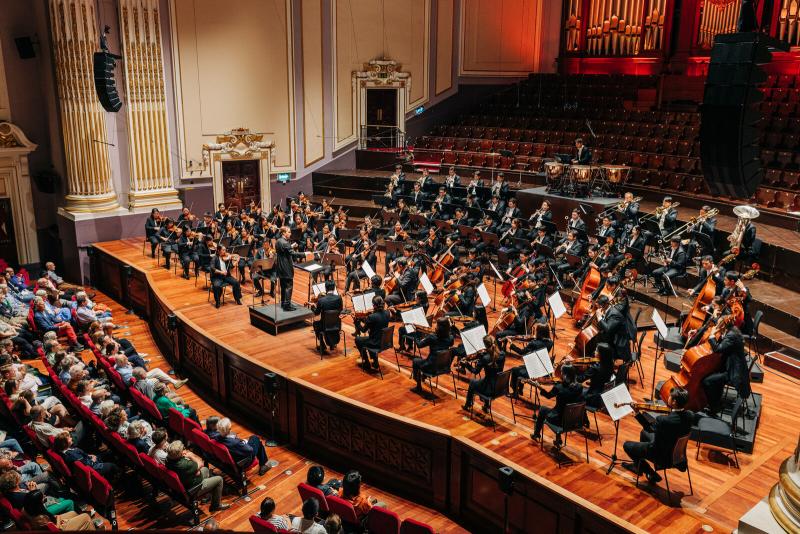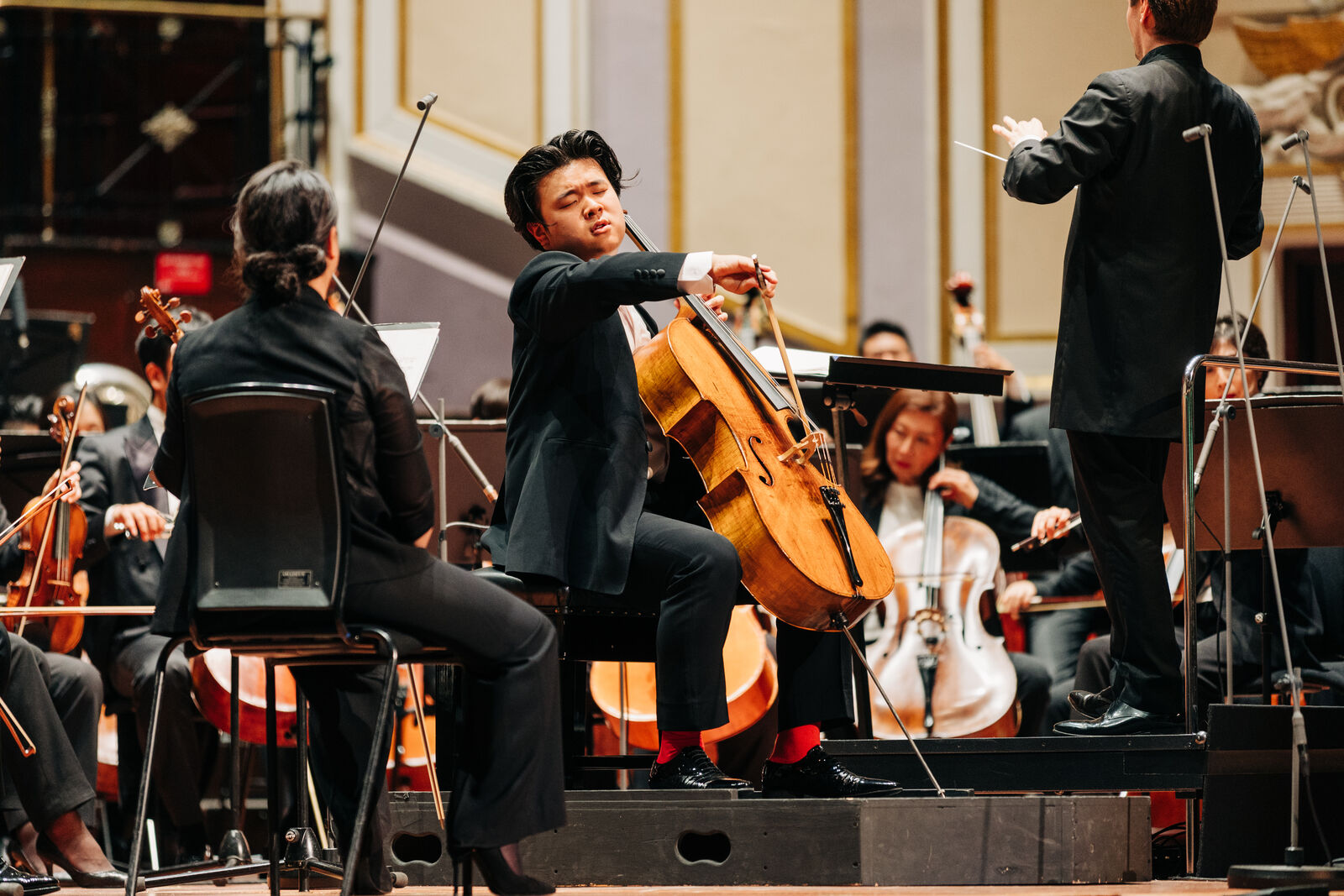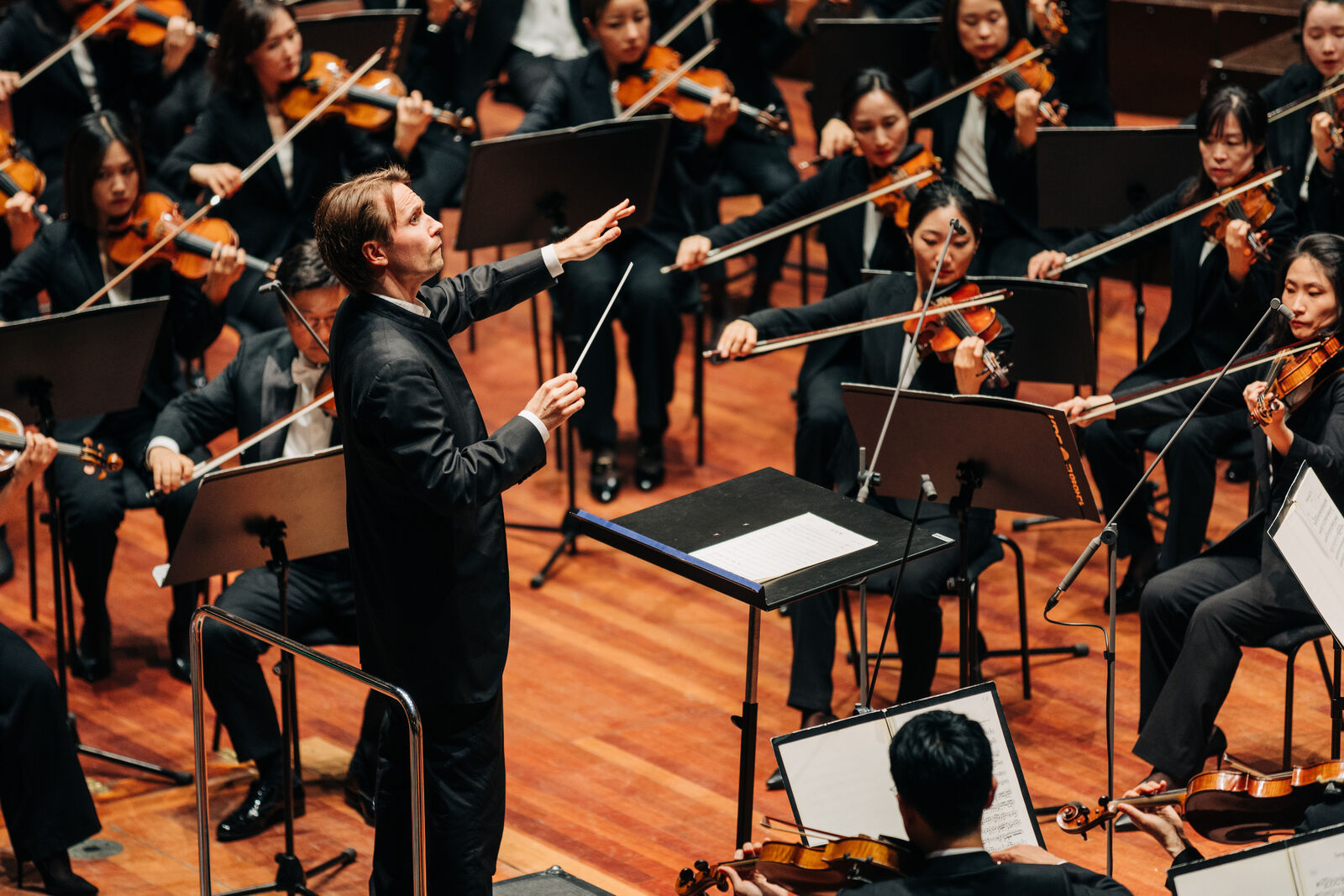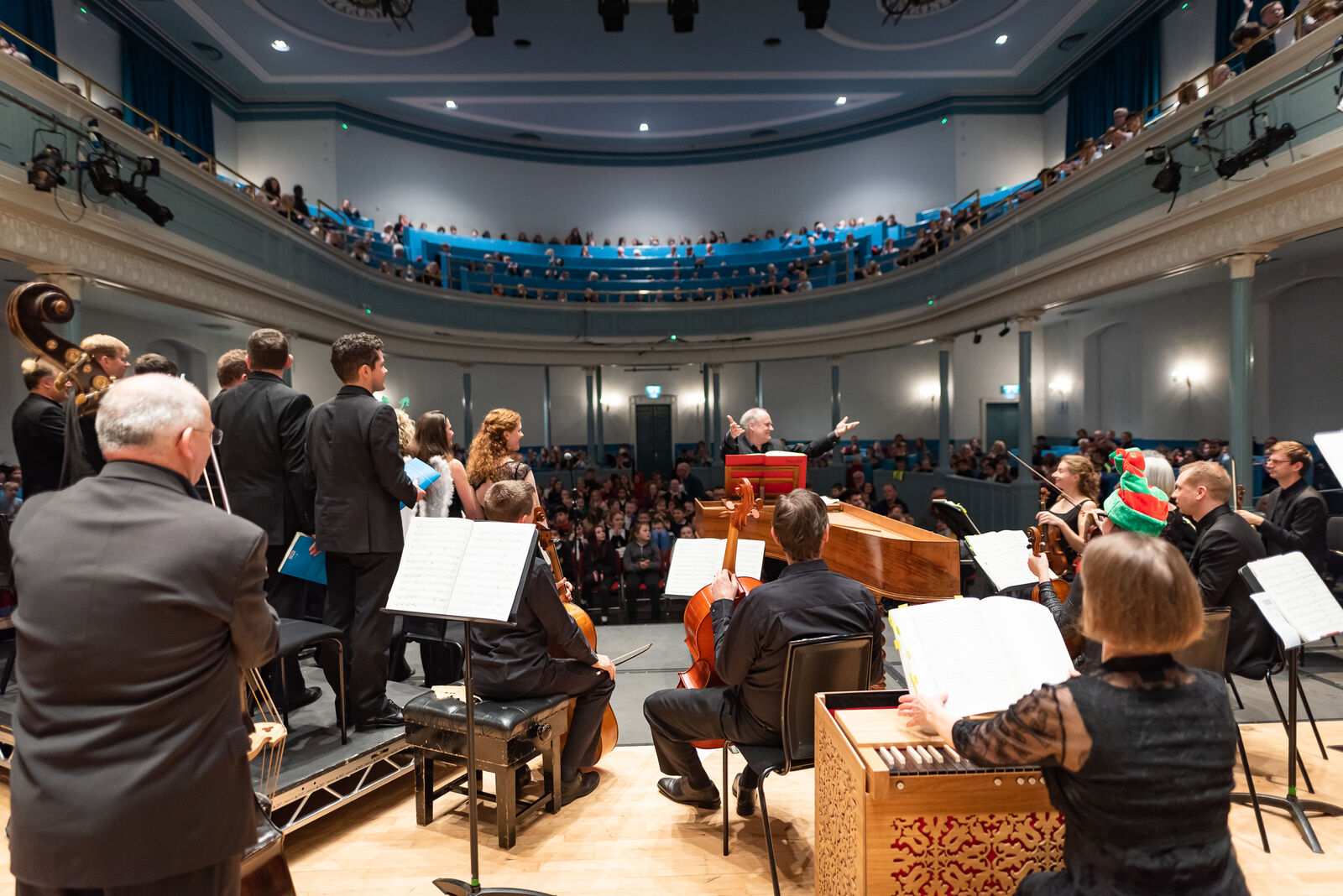Han, KBS Symphony Orchestra, Inkinen / Dunedin Consort, Butt, Edinburgh International Festival 2023 review - a tale of two very different orchestras | reviews, news & interviews
Han, KBS Symphony Orchestra, Inkinen / Dunedin Consort, Butt, Edinburgh International Festival 2023 review - a tale of two very different orchestras
Han, KBS Symphony Orchestra, Inkinen / Dunedin Consort, Butt, Edinburgh International Festival 2023 review - a tale of two very different orchestras
Confident Koreans followed by supreme Bach interpreters

There’s a Korean strain to the Edinburgh International Festival’s programme this year, more in the drama programme than in the music one, but it came to the Usher Hall in Friday night’s concert from the KBS Symphony Orchestra (★★★★). They play a similar role in Korea to what the BBC Orchestras do in the UK (KBS stands for Korean Broadcasting System) and if this concert is anything to go by then they’re a jolly impressive bunch of musicians.
Their overall sound was full of confidence, with a golden glow to the brass and a bright sheen to the strings. That came in very useful in illuminating the textures of Dvořák’s Cello Concerto, because while they were full of bluster and blare in the tutti sections of the outer movements, their introduction to the slow movement was observed with subtlety and skill, gentle winds picking their way forwards alongside soft strings before giving way to some serious drama in the central section.  Much of the colour and direction was down to conductor Pietari Inkinen who crafted a mainly legato approach to the orchestral sound but with enough vigour to keep things moving. And in Jaemin Han (pictured above) they had a cello soloist who was unafraid to give it his all. He played with lashings of vibrato and a determination to wring every last drop of lyricism from the music, and his performance was all the better for it. There was subtle beauty in the lyrical passages, balanced by wiry intensity in the faster moments, and he achieved implausible sweetness at the very top of his register.
Much of the colour and direction was down to conductor Pietari Inkinen who crafted a mainly legato approach to the orchestral sound but with enough vigour to keep things moving. And in Jaemin Han (pictured above) they had a cello soloist who was unafraid to give it his all. He played with lashings of vibrato and a determination to wring every last drop of lyricism from the music, and his performance was all the better for it. There was subtle beauty in the lyrical passages, balanced by wiry intensity in the faster moments, and he achieved implausible sweetness at the very top of his register.
The orchestral sound remained impressive in their performance of Tchaikovsky’s Symphony No. 5, lush and lavish, helped by the fact they were playing with quadruple winds. The first movement moved from inky darkness to a main Allegro of terrific vitality, and the high-calorie string sound that began the finale was something to wallow in. Inkinen (pictured below) kept things moving persuasively, with occasional pauses to enjoy the view. The only point where he dropped the ball was the opening of the slow movement, where the horn solo was beautifully played (by Principal Horn Samuel Jacobs) but droopily shaped. Elsewhere, while wind entries were occasionally ragged and the climaxes of the finale were rather congested, this was an impressive performance from an Asian orchestra that’s new to me.  But if it was tight orchestral ensemble you’ were seeking, then you only had to get up for the Queen’s Hall concert the following morning to hear the Dunedin Consort playing all four of Bach’s Orchestral Suites (★★★★★). OK, it’s hardly a fair comparison between a full-scale symphony orchestra and a crack period team, but the quality of the engagement was so high that it sounded like it came from a different. The Dunedin Consort were musicians so immersed in their music and so committed to its realisation that their playing was a constant joy, and a reminder of the old adage that Bach’s music is like the sound of angels dancing.
But if it was tight orchestral ensemble you’ were seeking, then you only had to get up for the Queen’s Hall concert the following morning to hear the Dunedin Consort playing all four of Bach’s Orchestral Suites (★★★★★). OK, it’s hardly a fair comparison between a full-scale symphony orchestra and a crack period team, but the quality of the engagement was so high that it sounded like it came from a different. The Dunedin Consort were musicians so immersed in their music and so committed to its realisation that their playing was a constant joy, and a reminder of the old adage that Bach’s music is like the sound of angels dancing.
John Butt (pictured below with the Dunedins in the Queen's Hall by Andy Caitlin) conducted them from the keyboard like a bouncing ball of energy, reminding us repeatedly that this was the music of the dance, so that each movement swung and flickered as though it was freshly written. Butt wisely reordered the suites to perform the bigger ones (with trumpets and drums) at the beginning and end, raising the curtain with the terrific ebullience of No. 3 and ending with the extravaganza of No. 4. If the heft of the tuttis didn’t carry you away then the delicacy of the inner writing most definitely would have done, something helped by the bespoke ensemble for each suite, ranging from seven musicians for No. 2 up to sixteen for No. 4.  Such ravishing attention to detail, with all the delicate interior figurations all made glitteringly clear, made this a showcase of how this music should sound when it has had all the appropriate care lavished upon it. The Réjouissance last movement of No. 1 sent us out into the Edinburgh afternoon with a terrific injection of adrenaline, “rejoicing” indeed.
Such ravishing attention to detail, with all the delicate interior figurations all made glitteringly clear, made this a showcase of how this music should sound when it has had all the appropriate care lavished upon it. The Réjouissance last movement of No. 1 sent us out into the Edinburgh afternoon with a terrific injection of adrenaline, “rejoicing” indeed.
Explore topics
Share this article
The future of Arts Journalism
You can stop theartsdesk.com closing!
We urgently need financing to survive. Our fundraising drive has thus far raised £49,000 but we need to reach £100,000 or we will be forced to close. Please contribute here: https://gofund.me/c3f6033d
And if you can forward this information to anyone who might assist, we’d be grateful.

Subscribe to theartsdesk.com
Thank you for continuing to read our work on theartsdesk.com. For unlimited access to every article in its entirety, including our archive of more than 15,000 pieces, we're asking for £5 per month or £40 per year. We feel it's a very good deal, and hope you do too.
To take a subscription now simply click here.
And if you're looking for that extra gift for a friend or family member, why not treat them to a theartsdesk.com gift subscription?
more Classical music
 Anja Mittermüller, Richard Fu, Wigmore Hall review - a glorious hall debut
The Austrian mezzo shines - at the age of 22
Anja Mittermüller, Richard Fu, Wigmore Hall review - a glorious hall debut
The Austrian mezzo shines - at the age of 22
 First Person: clarinettist Oliver Pashley on the new horizons of The Hermes Experiment's latest album
Compositions by members of this unusual quartet feature for the first time
First Person: clarinettist Oliver Pashley on the new horizons of The Hermes Experiment's latest album
Compositions by members of this unusual quartet feature for the first time
 Gesualdo Passione, Les Arts Florissants, Amala Dior Company, Barbican review - inspired collaboration excavates the music's humanity
At times it was like watching an anarchic religious procession
Gesualdo Passione, Les Arts Florissants, Amala Dior Company, Barbican review - inspired collaboration excavates the music's humanity
At times it was like watching an anarchic religious procession
 Classical CDs: Camels, concrete and cabaret
An influential American composer's 90th birthday box, plus British piano concertos and a father-and-son duo
Classical CDs: Camels, concrete and cabaret
An influential American composer's 90th birthday box, plus British piano concertos and a father-and-son duo
 Cockerham, Manchester Camerata, Sheen, Martin Harris Centre, Manchester review - re-enacting the dawn of modernism
Two UK premieres added to three miniatures from a seminal event of January 1914
Cockerham, Manchester Camerata, Sheen, Martin Harris Centre, Manchester review - re-enacting the dawn of modernism
Two UK premieres added to three miniatures from a seminal event of January 1914
 Kempf, Brno Philharmonic, Davies, Bridgewater Hall, Manchester review - European tradition meets American jazz
Bouncing Czechs enjoy their Gershwin and Brubeck alongside Janáček and Dvořák
Kempf, Brno Philharmonic, Davies, Bridgewater Hall, Manchester review - European tradition meets American jazz
Bouncing Czechs enjoy their Gershwin and Brubeck alongside Janáček and Dvořák
 Solomon, OAE, Butt, QEH review - daft Biblical whitewashing with great choruses
Even a top soprano and mezzo can’t make this Handel paean wholly convincing
Solomon, OAE, Butt, QEH review - daft Biblical whitewashing with great choruses
Even a top soprano and mezzo can’t make this Handel paean wholly convincing
 Two-Piano Gala, Kings Place review - shining constellations
London Piano Festival curators and illustrious friends entertain and enlighten
Two-Piano Gala, Kings Place review - shining constellations
London Piano Festival curators and illustrious friends entertain and enlighten
 Echo Vocal Ensemble, Latto, Union Chapel review - eclectic choral programme garlanded with dance
Beautiful singing at the heart of an imaginative and stylistically varied concert
Echo Vocal Ensemble, Latto, Union Chapel review - eclectic choral programme garlanded with dance
Beautiful singing at the heart of an imaginative and stylistically varied concert
 Scott, Irish Baroque Orchestra, Whelan, RIAM, Dublin review - towards a Mozart masterpiece
Characteristic joy and enlightenment from this team, but a valveless horn brings problems
Scott, Irish Baroque Orchestra, Whelan, RIAM, Dublin review - towards a Mozart masterpiece
Characteristic joy and enlightenment from this team, but a valveless horn brings problems
 Classical CDs: Voice flutes, flugelhorns and froth
Baroque sonatas, English orchestral music and an emotionally-charged vocal recital
Classical CDs: Voice flutes, flugelhorns and froth
Baroque sonatas, English orchestral music and an emotionally-charged vocal recital

Add comment